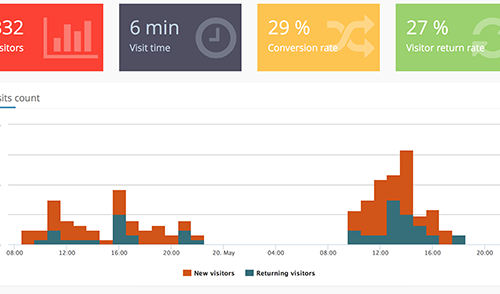It’s the night before the event. You are stressing, you haven’t a clue how it is going to work out. Having worked tirelessly for months bringing together multiple moving parts and satisfying a whole host of stakeholders the next few days are pivotal. Not only do events remain decisive for 99% of event exhibitors (according to the Center for Exhibition Industry Research), but they provide unique opportunities to reach new customers and further brand aspirations. The CEIR in fact found that 72% of people believed them to impact on their buying decisions.
With their importance underlined, you begin to focus your priorities. The same questions always crop up. How are you going to man the stand, engage passers by, take note of all the key seminars going on across the show, keep the spokespeople on top form and ultimately know whether any of your efforts have been worth it? Well, instead of dwelling on them, perhaps instead focus your attention on why you have so many questions in the first place.
The need for metrics in a KPI dominated marketing sphere
It is completely mystifying, but questions essentially revolve around one key thing. There is currently no way of fully evaluating event success. In every other area of the marketing mix, KPIs are now par for the course, but in the event industry things are far from clear. As a consequence, justifying often the single biggest outlay in the marketing calendar can be tricky. With outlays ranging from an average of $22.32 per square foot for a tailored stand and $100-150 for a custom built one (Tradeshowinstitute.com), the need for justification could not be more poignant.
This struggle can be placed firmly at the door of current evaluation measures. Incredibly challenging at best, badge scanning and other touchpoint measures require additional personnel and are a test of patience. With their additional hassle, inaccuracies and costs, it is perhaps unsurprising that much evaluation will end up being conducted through conversations around the watercooler and hastily completed feedback forms.
Visitor analytics delivers reliable insights to inform decision making
Well, not any more – thankfully. The answer to the problem is actually so straightforward that it is a surprising, and it is no less impactful. With Wi-Fi now as important as the transport links to and from a venue, a non-invasive analytics solution is available. As if providing eyes on to an events success, for the first time, every attendee’s movements can be tracked passively.
Regulated by EU privacy laws, every detail about an event now has a clear, reliable and concrete metric allocated to it. Worry can now be instantly replaced with strategic, clear and careful opportunities to evaluate your plans. Instead of making sweeping generalisations, engagement strategies can be evaluated through stand visits, dwell times and conversion rates. Additionally, behavioural patterns can be established from the flow of movements from one stand to the next.
Of course, we are all busy people, making it a necessity that any solution be delivered with minimal disruption. These requirements make Wi-Fi an even more attractive option. For an organiser, as setup can be instantly optimised overnight and in less than 24 hours. For an exhibitor, the benefits sync in perfectly with your activities.
Importantly, no one likes data for the sake of it. Instead, Wi-Fi analytics can be completely adapted to suit business needs. Understanding that during the event you are likely to be rushing around headless a report can be tailored to the needs of each exhibitor, with actionable recommendations. There is then the opportunity to deepdive into the data with a customisable portal that is also available in real-time.
Literally overnight, the sweeping assumptions made by industry bodies such as the CEIR can now be firmly qualified. The CEIR for example explains that only 10% of attendees will be your target market, while 20-50% of stand attendees will be other exhibitors and suppliers. Overall, their suggestion that about 45% of attendees are likely to be interested in your stand can be evaluated instantly.
A new generation of events
Location based analytics will provide an opportunity to fully reward the great work performed by events people throughout the calendar. Looking into the future, it is clear the events are likely to become the focal point for many organisations. Despite the advances in technology, people still buy people, making positioning them at the forefront of a brand experience likely to open the door to a new generation of events.
It is an attractive and exciting talking point. In a just few years time we are likely to be marvelling at better event designs, more immersive experiences, more engaging on-stand demonstrations and clearer propositions, making the overall event experience much more compelling for everyone involved. So before begin to plan your next event and you are thinking ‘isn’t there a better way I can be doing this?’ why not take a step back and consider using Wi-Fi analytics.






